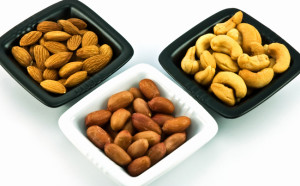How to Improve Energy Levels: 7 Strategies for the Overtired
Wondering how to improve energy levels? Consider these seven simple lifestyle adjustments that will make you more efficient and productive.
You’re feeling spent, listless, and/or exhausted after work almost every night—and the next morning. You can’t seem to break out of a pattern of dragging through the day and collapsing into bed at night. You’re looking to get some zip back in your step—and to learn how to improve energy levels.
There may be medical reasons causing your fatigue (see “Fatigue Causes: How to Tackle Both Serious Ailments and Easy Fixes“). If you’ve ruled out more serious conditions, then there may be lifestyle habits at play. As such, consider these research-supported strategies to boost your energy level throughout the day—and all week long.
How to Improve Energy Levels Tip #1: Get your magnesium.
Why magnesium? Because this important mineral factors into hundreds of biochemical reactions in your body, reactions that regulate blood glucose control, nerve function, blood pressure, bone strength, heart rhythm, metabolism, and more. According to the National Institutes of Health, magnesium “is required for energy production, oxidative phosphorylation, and glycolysis.”
So ensure that your diet has enough magnesium (see sidebar below). Just remember not to overdo it. According to NIH, “Too much magnesium from food does not pose a health risk in healthy individuals because the kidneys eliminate excess amounts in the urine. However, high doses of magnesium from dietary supplements or medications often result in diarrhea that can be accompanied by nausea and abdominal cramping.”
Despite that disclaimer, make no mistake about the positive, energy-maintaining effects of magnesium. Essentially, too little magnesium makes your body work harder. During moderate activity, people with low magnesium levels in their muscles are likely to exert more energy and tire out more quickly than those who have adequate levels.
How to Improve Energy Levels Tip #2: Eat right.
Besides getting enough magnesium through your food and beverage intake, make sure that your diet, in general, is rich in foods that give energy. They can play a major role in helping you break the cycle of fatigue. Start your day with a healthy breakfast to boost your metabolism; it should include carbohydrates and protein from such sources as whole-wheat toast, peanut or almond butter, fruit with cereal or yogurt, or oatmeal flavored with nuts and raisins.

Almonds, peanuts, and cashews are among the worthy sources of foods that can boost your energy level.
Lunch and dinner menus can’t go wrong if they include such items as brown rice, sweet potato, eggs, salmon, lean meats, and a rainbow of vegetables (broccoli, carrots, peppers, and more) and fruits. Mid-morning and mid-afternoon snacks can give you a healthy boost as well; easy-to-access favorites like bananas, apples, almonds, cashews, and lean yogurt all work as energy-boosting foods. (See our posts Natural Energy Boosters? Keep These Snacks Close By and “Healthy Snacking Habits.”)
See our sidebar box below to view the National Institutes of Health’s recommendations for dietary allowance for magnesium.
How to Improve Energy Levels Tip #3: Be water-wise.
It’s a simple strategy that’s easy to take for granted: Staying hydrated is a must for anyone wondering how to improve energy levels. Dehydration is known to bring on lethargy and listlessness. A 2012 study at the University of Connecticut’s Human Performance Laboratory showed that being even slightly dehydrated alters our energy level as well as our ability to think clearly and our mood. Drinking between eight 8-ounce glasses of water per day will do the trick, so keep a fresh source of water nearby during your daily routine. Add slices of lemon, lime, or oranges for a little variety.
The color of your urine is one clue that you may not be getting enough water. When we’re well hydrated, we produce very pale urine; if it’s a dark yellow, you may not be getting enough water.
And by all means, push away the sugary sodas and juice drinks. The buzz they provide comes and goes quickly; water is far more effective in keeping us hydrated.
How to Improve Energy Levels Tip #4: Get a walking start to regular exercise.
It’s the classic “vicious circle”: You’re lacking in energy, and you know exercise will help you restore it—but you can’t find the energy to get started. Advice: Don’t think in terms of working out like a triathlete in training. (At least not yet!) If you’ve been sedentary for too long, find a 45-minute window of time every day—or at least every other day—to just walk. Start slow and work your way up to a brisk walk. If weather prohibits you from getting outside, a treadmill or stationery bike will do the trick.
A well-publicized study at the University of Georgia in 2008 dug into the idea of treating fatigue with exercise. As the New York Times reported, the research proved that “regular, low-intensity exercise may help boost energy levels in people suffering from fatigue.” And a director from the university’s lab published this pointed observation: “Exercise is a way for people to feel more energetic. There’s a scientific basis for it, and there are advantages to it compared to things like caffeine and energy drinks.”
How to Improve Energy Levels Tip #5: Sleep well.
Insomnia, sleep apnea, restless leg syndrome…. There are multiple conditions that prevent us from getting a good night’s sleep. And when we try to get by on a few hours of sleep (rather than eight or at least seven hours) for an extended stretch of time, our energy level suffers.

Lacking in energy? One solution may involve the sleep you allow yourself. If it’s less than seven hours, you likely find yourself dragging at times.
So if you find yourself lying awake in the middle of the night, or awakening suddenly several times during the night, take steps to correct the problem. Keep your bedroom uncluttered, don’t watch TV before sleeping, and don’t drink alcohol or caffeinated drinks before bed.
The National Heart, Lung, and Blood Institute (NIH) observes, “You may not notice how sleep deficiency affects your daily routine. A common myth is that people can learn to get by on little sleep with no negative effects. However, research shows that getting enough quality sleep at the right times is vital for mental health, physical health, quality of life, and safety.”
How to Improve Energy Levels Tip #6: Become a stress-handler.
There’s no doubt that stressful situations, anxiety, and depression can sap our energy. Being stressed or emotionally drained is known to tax our adrenal glands, which produce cortisol (the stress hormone). After an initial adrenaline rush during stressful situations, we come crashing down, exhausted.
Experts point out that every one of us will encounter stress throughout life, and the resulting symptoms can expend energy. (See our post 30 Stress Symptoms You May Recognize for a list of 30 common ones.) The key is to manage stress. A U.K. organization called the Stress Management Society notes, “The symptoms of stress act as an early warning system. They signal a developing imbalance between our energy and the demands of our life. They tell us that we are getting out of balance. If the imbalance continues or gets worse we run the risk of getting sick in the future.”
Tip No. 4 above—no surprise—goes a long way in combating stress; regular exercise is a proven defense against symptoms of stress. Likewise, staying hydrated, eating right and sleeping well combine to give you a fighting chance to handle stressful situations—and to keep your energy at a good level.
How to Improve Energy Levels Tip #7: Consult your physician.
Being overtired could be related to an illness; it’s a symptom that shows up commonly in patients who have arthritis, diabetes, heart disease, celiac disease, emphysema, bronchitis, and chronic obstructive pulmonary disease (COPD), not to mention Lyme disease, sleep apnea, depression, and a litany of other conditions.
If your fatigue feels chronic, consult your doctor, who may want to initiate testing to rule out one or more of the illnesses above, among others. If you’ve already been diagnosed with one of these conditions, consider that medications can make you feel fatigued. Your physician can review your needs to determine whether you’re taking the right dosage.
RECOMMENDED MAGNESIUM INTAKE
The National Institutes of Health (NIH) recommends this dietary allowance for magnesium:
Age: Allowance
1 to 3 years: 80 mg (male), 80 mg (female)
4 to 8 years: 130 mg (male), 130 mg (female)
9 to 13 years: 240 mg (male), 240 mg (female)
14 to 18 years: 410 mg (male), 360 mg (female)
19 to 30 years: 400 mg (male), 310 mg (female)
31 to 50 years: 420 mg (male), 320 mg (female)
51+ years: 420 mg (male), 320 mg (female)
The following foods are worthy sources of magnesium, according to the NIH’s Office of Dietary Supplements.
Nuts
Almonds (dry roasted, 1 ounce): 80 mg
Cashews (dry roasted, 1 ounce): 74 mg
Peanuts (oil roasted, ¼ cup): 63 mg
Fruits & Vegetables
Spinach (boiled, ½ cup): 78 mg
Avocado (cubed, 1 cup): 44 mg
Potato (baked with skin, 3.5 oz.): 43 mg
Banana (1 medium): 32 mg
Raisins (1/2 cup): 23 mg
Broccoli (chopped, cooked, ½ cup): 12 mg
Apple (1 medium): 9 mg
Carrot (raw, 1 medium): 7 mg
Beans/Legumes
Black beans (cooked, ½ cup): 60 mg
Edamame (shelled, cooked, ½ cup): 50 mg
Kidney beans (canned, ½ cup): 35 mg
Meat and Fish
Salmon (Atlantic, farmed, cooked, 3 oz.): 26 mg
Halibut (cooked, 3 oz.): 24 mg
Chicken breast (roasted, 3 oz.): 22 mg
Beef (ground, 90% lean, 3 oz.): 20
Others:
Soy milk (plain or vanilla, 1 cup): 61 mg
Peanut butter (smooth, 2 tablespoons): 49 mg
Bread (whole wheat, 2 slices): 46 mg
Brown rice (cooked, ½ cup): 42 mg
Yogurt (plain, low-fat, 8 oz.): 42 mg
Oatmeal (instant, 1 packet): 36 mg
Milk (1 cup): 24 to 27 mg
Originally published in 2016, this post is regularly updated.


 Protein Needs as We Age
Protein Needs as We Age  Look Beyond the Scale
Look Beyond the Scale  Can Allergies Make You Tired?
Can Allergies Make You Tired? 
How to improve energy levels? Exercise!
Błażej Łyjak | Dreamstime